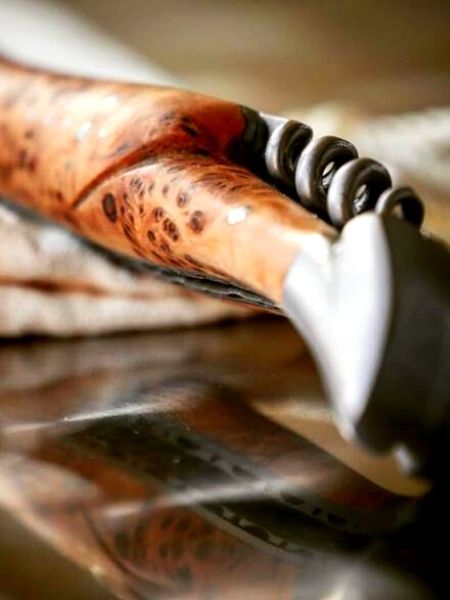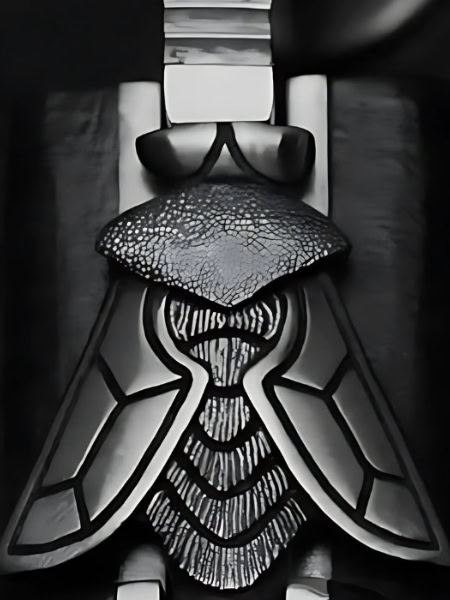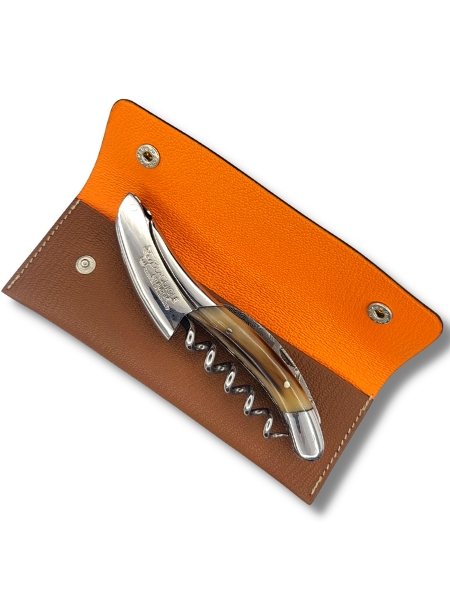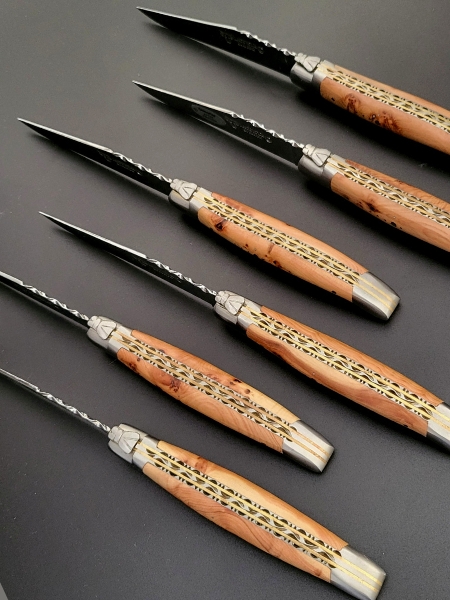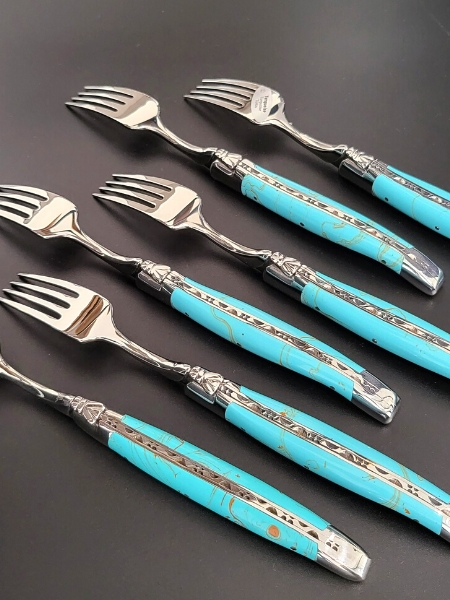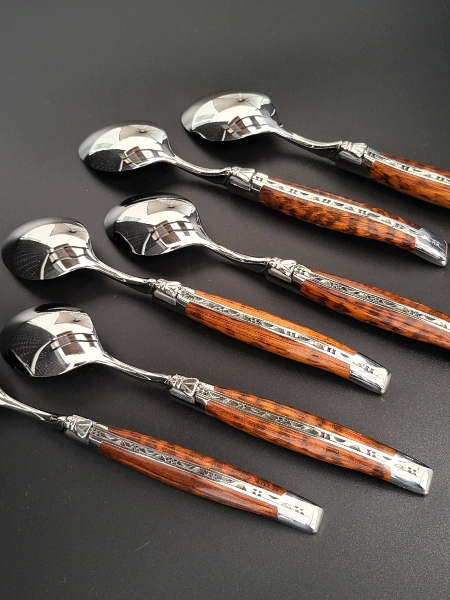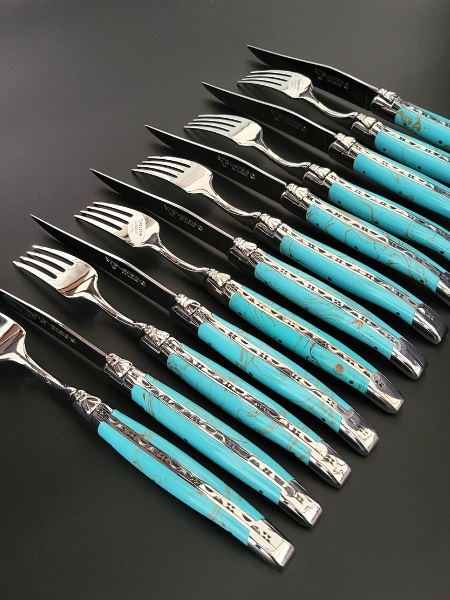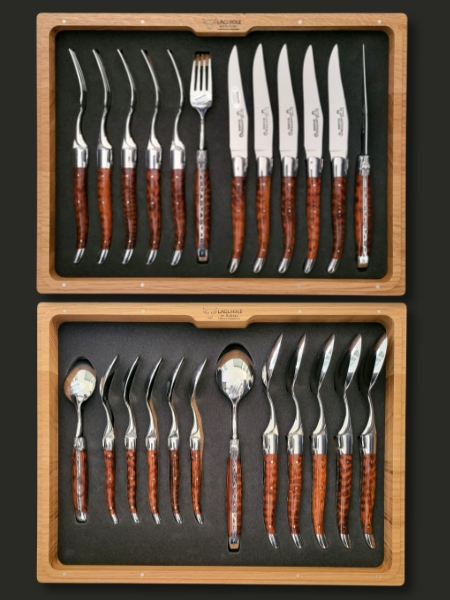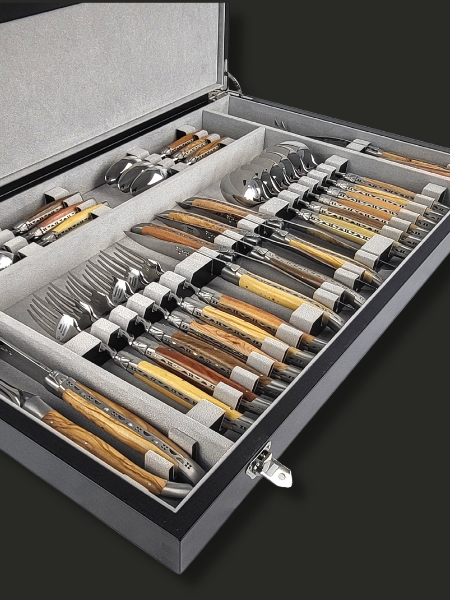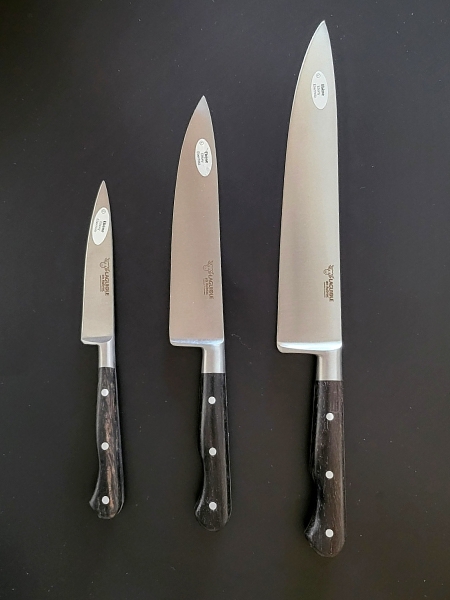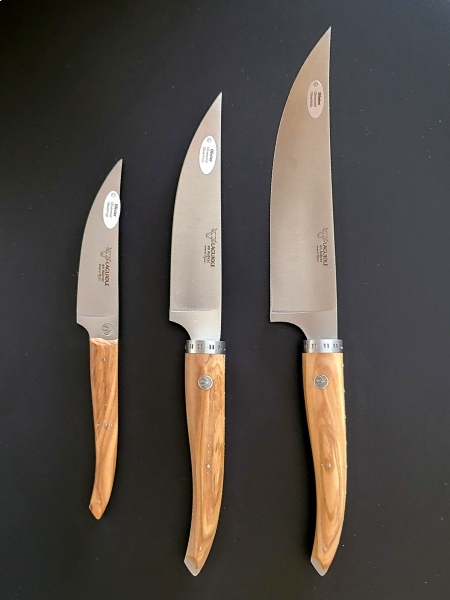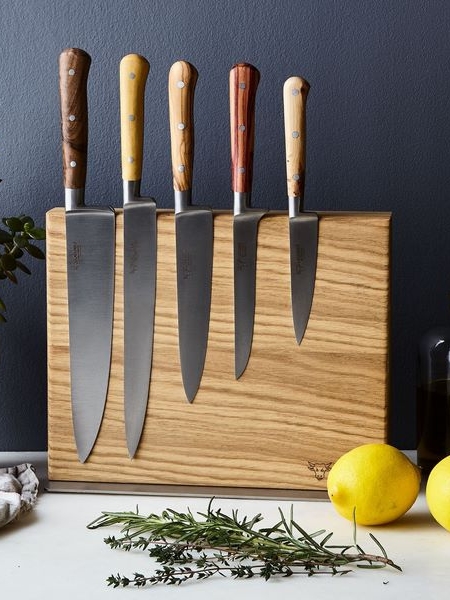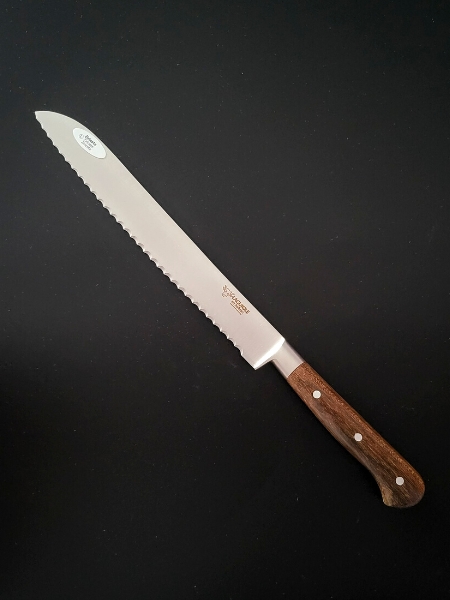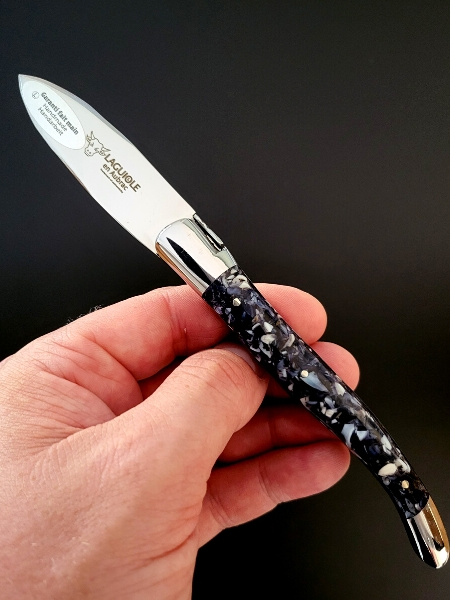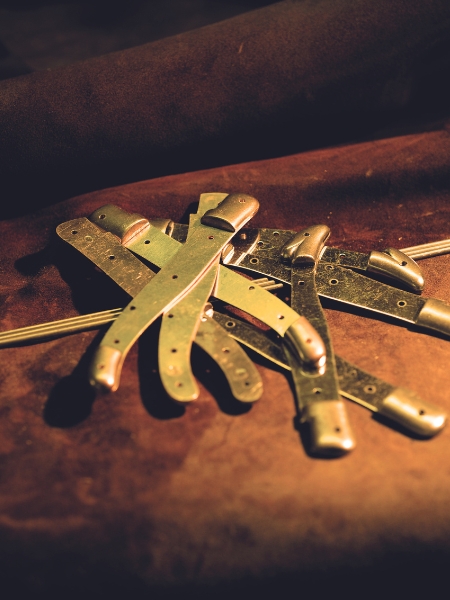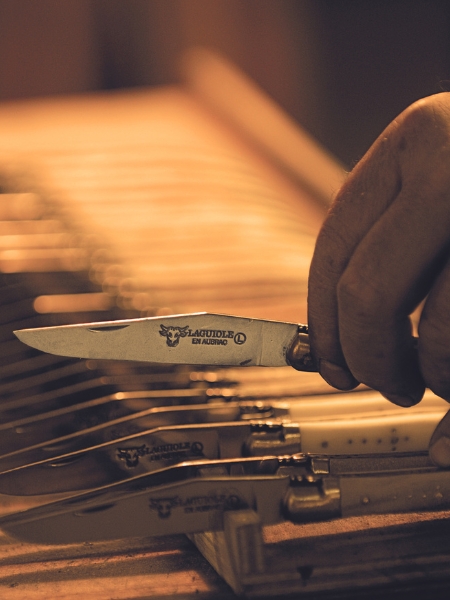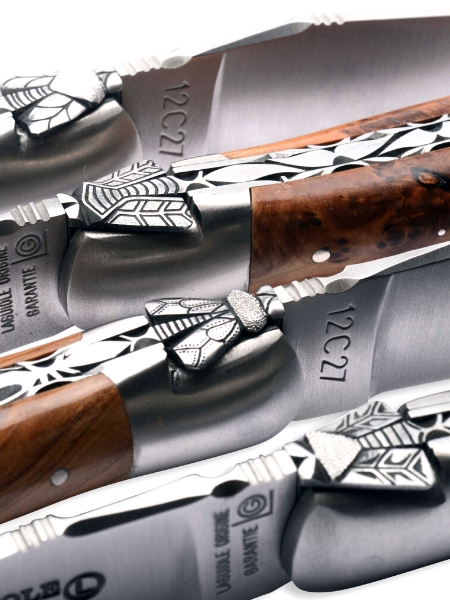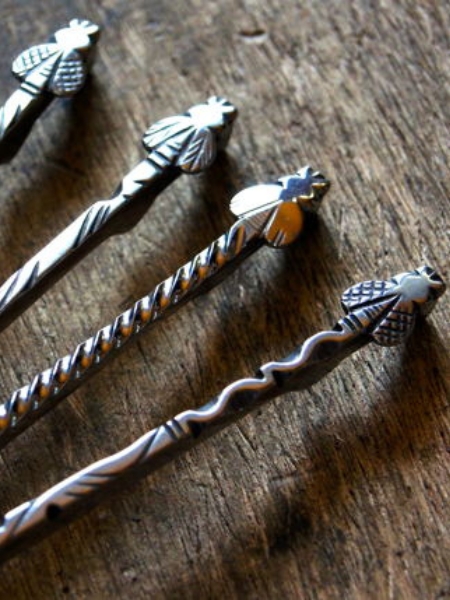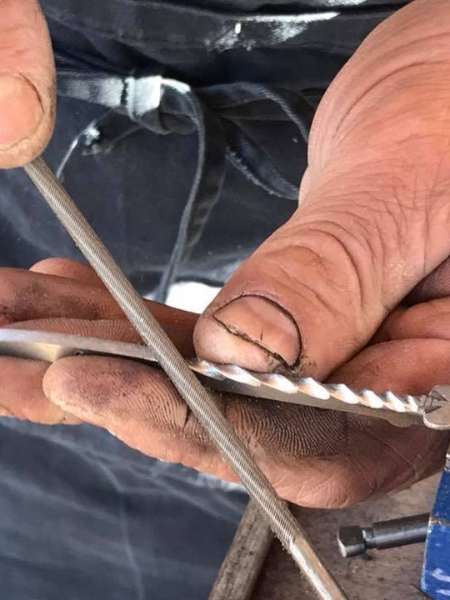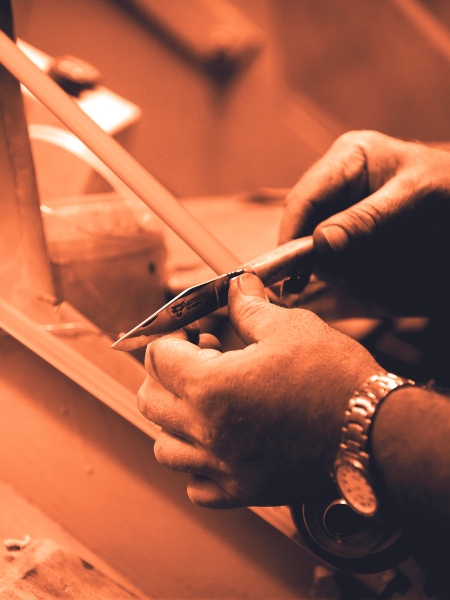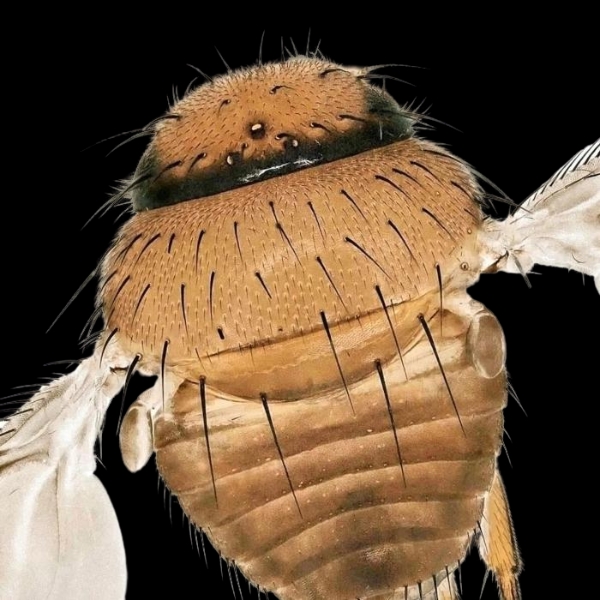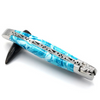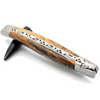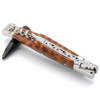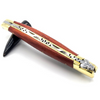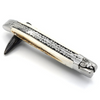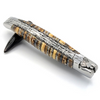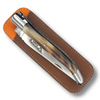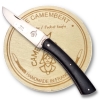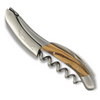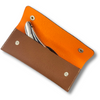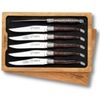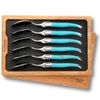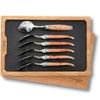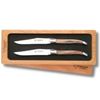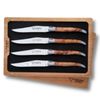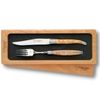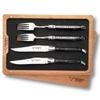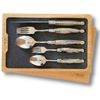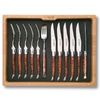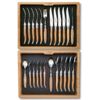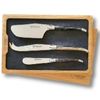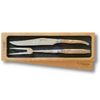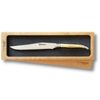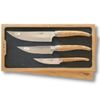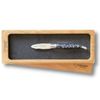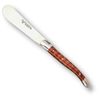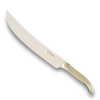
Blades, bolsters, and plates
Preamble: Food safety standards
The European Union requires each member country to comply with the standard stating that at least 13% chromium must be present in all metal components intended for use in the food industry. This minimum chromium content ensures that these components fully comply with established food safety standards. This requirement applies to all products classified as stainless steel.
Sandvik 12C27MOD martensitic stainless steel is a chrome steel specifically optimized for the manufacturing of cutlery. Martensite is a metastable phase of steels resulting from the transformation of austenite γ below a certain martensitic temperature without diffusion.
After proper heat treatment, the carbon and chromium composition of this steel provides a unique combination of properties, such as exceptional hardness, excellent corrosion resistance, and wear resistance.
As expected, products do not contain lead or cadmium in their metal components, as these metals are dangerous to health and should not be used in knife blades or other premium accessories.
The chemical composition of Sandvik 12C27MOD steel blades is as follows: Carbon: 0.5%, Silicon: 0.43%, Manganese: 0.51%, Phosphorus: 0.013%, Sulfur: 0.0009%, Chromium: 14.27%, and the remainder being steel.
XC75 carbon steel blades
XC75 carbon steel blades, although of lower quality than stainless steel, offer appreciable ease of sharpening but require more frequent maintenance. In the past, most knives were equipped with these blades. Mainly composed of iron and carbon, they tend to darken and oxidize, which can sometimes alter the taste of food. Despite their continuous production in our workshops, we do not offer these blades on our website.
Carbon damascus steel blades
Visit our dedicated page on carbon damascus steel blades. You will find a video illustrating the key steps in their manufacturing process.
Please note that the information provided on the metal compositions of our products is based on the data available at the time of publication. However, variations in metal composition may occur due to changes made by raw material suppliers, updates to industry standards, or changes in manufacturing processes.



